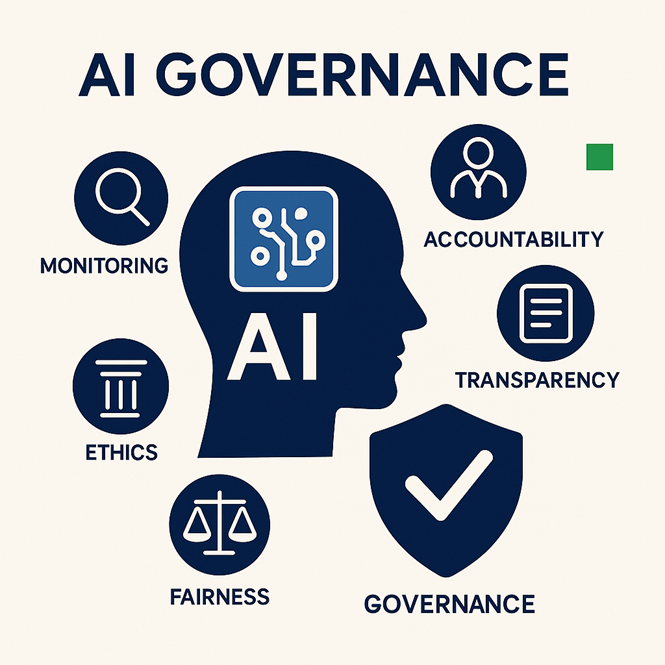AI Governance for SMBs: A Practical Guide to Responsible, Compliant AI Adoption
AI Governance for SMBs: A Practical Guide to Responsible, Compliant AI Adoption
Build trust, reduce risk, and unlock value from AI — without breaking compliance.

Artificial intelligence is transforming how small and mid-sized businesses operate — from sales forecasting to customer support. But without clear oversight, it can create real risks: data leaks, biased decisions, and regulatory penalties. That’s why AI governance is becoming a business imperative, not just a tech concern.
In this guide, we’ll explore what AI governance really means for SMBs, how it overlaps with familiar compliance frameworks like SOC 2 and HIPAA, and what you can do today to build a responsible AI foundation.
Why AI Governance Matters
AI governance is the set of policies, frameworks, and operational processes that ensure your AI systems remain secure, ethical, and compliant with regulations. It provides the visibility and accountability that businesses need to use AI confidently.
Without governance, teams risk deploying tools that mishandle sensitive data, generate inaccurate outputs, or fail regulatory audits. With governance, AI becomes a trusted, scalable advantage.
The Five Pillars of Responsible AI
1) Accountability — Assign clear ownership for AI decisions and model outputs.
2) Transparency — Track where data comes from, how it’s used, and when models are retrained.
3) Privacy & Security — Apply SOC 2 and HIPAA-level controls to any system touching sensitive data.
4) Fairness & Bias Control — Audit results to identify and correct bias in training data or prompts.
5) Continuous Monitoring — Review AI behavior, logs, and policies regularly to ensure ongoing compliance.
Connecting AI Governance to Compliance Frameworks
If your organization already follows SOC 2, HIPAA, or CMMC standards, you’re already covering much of what AI governance requires. Many controls overlap directly with responsible AI practices.
• SOC 2 — Logical access, change management, system monitoring, incident response
• HIPAA — Safeguarding PHI, data use agreements, risk analysis
• CMMC — CUI protection, audit logging, access control
• ISO 42001 (AI Management) — AI risk assessments, transparency documentation, ethical alignment
A 3-Step Framework for SMB AI Governance
1) Identify your AI footprint. Catalog every AI-powered tool your teams use — including those embedded in CRMs, email platforms, or chatbots.
2) Define acceptable use. Draft a one-page AI policy outlining how employees should (and shouldn’t) use AI. This helps prevent accidental data leaks.
3) Measure & monitor. Incorporate AI systems into your existing compliance audits (SOC 2, HIPAA, etc.) to maintain continuous visibility.
Coming soon: The ComplyPrime AI Readiness Checklist — subscribe to be notified when it launches.
Turn AI from a risk into a competitive advantage.
Join the growing community of SMB leaders building responsible, compliant AI practices.